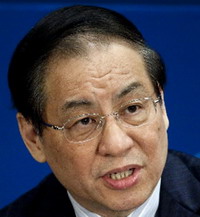Money
Subprime mortgage crisis? Not here
By Wang Xing (China Daily)
Updated: 2011-03-15 13:29
 |
Large Medium Small |
Banks protected by low home-loan ratio and high downpayments
BEIJING - Chinese banks will not run a great risk of bad loans should a property bubble burst because only a small part of bank lending went to homebuyers, said China's top banking regulator.
|
 |
|
Liu Mingkang, chairman of the CBRC, |
Instead, Liu warns about the risk of local government financing vehicles, saying that the regulator is investigating and cleaning up these lending platforms.
Last year, the Chinese government began launching a series of measures to tame surging real estate prices, including raising interest rates and asking commercial banks to suspend mortgage loans for buyers of more than two homes.
Many analysts have expressed concern that the measures will lead to a Chinese version of the "subprime mortgage crisis" that may strain developers' finances and cause homebuyers to default on their mortgages.
According to Richard Fox, a London-based analyst at Fitch Ratings Ltd, China faces a 60 percent risk of a banking crisis by mid-2013 in the wake of record lending and surging property prices, Bloomberg reported. The US rating firm was quoted as saying that a property bubble burst can punch "holes in banks' balance sheets" in China.
Dong Wenbiao, chairman of Minsheng Banking Corp, told media during the weekend that he thinks most Chinese banks can weather a 40 percent plunge in real estate prices. He said only 10 percent of lending at Minsheng Banking goes to homebuyers.
Liu from CBRC said on Monday that China's top banking watchdog will keep a close eye on the possible risk brought about by local government financing vehicles, which help local government to borrow money from banks.
He said the risk of the financial platforms is under control, but the CBRC will keep tracking the risks during the next three to five years.
Data released by the People's Bank of China, the central bank, showed new yuan-denominated loans stood at 535.6 billion yuan ($81.5 billion) last month, lower than what many economists had estimated.
M2, the broadest measure of money supply, climbed 15.7 percent, the smallest amount in more than two years, perhaps a result of several increases in bank interest rates and reserve ratio requirements.
| 分享按钮 |



